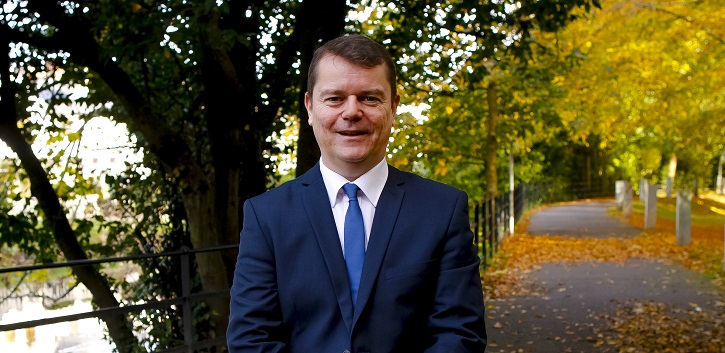UCC sensory scientist launches publication for F&B sector

With 70-98% of new product launches failing, UCC sensory scientist Dr Maurice O’ Sullivan’s book focused on consumer-led product development has been hailed as “a critical update to the food and beverage sector.”
Sensory research is essential to food and beverage product development, yet traditional approaches can be expensive and out of reach of the SME sector. Sensory testing is critical for new product development/optimization, ingredient substitution and devising appropriate packaging and shelf life as well as comparing foods or beverages to competitor’s products.
According to Dr O’Sullivan, lecturer, Food Science, UCC’s School of Food and Nutritional Sciences, A Handbook for Sensory and Consumer Driven New Product Development should appeal to new food and beverage product development researchers working in large corporations and SMEs, while also being accessible to novices starting their own businesses and students.
Sensory Scientist Releases Publication for F&B Sector https://t.co/NoEXPCVXBj pic.twitter.com/l07hkBiSEt
— FFT (@FFTresource) October 12, 2016
“The book emphasises new innovations and technologies, which are considerably cheaper to undertake and a more competitive solution for developers in getting their products to market with optimal consumer sensory quality,” Dr O’Sullivan said.
The first part of the book covers the sensory methods which are used by sensory scientists and product developers, including established and new and innovative methods. Initially, ‘difference methods’, ’descriptive methods’ and ‘affective methods’ are discussed.
Difference methods are the most basic form of sensory test and are relatively simple procedures whereby samples are compared directly to other samples and assessors are asked to determine if they are the same or different. Descriptive methods, involves the training of panellists, which are then used to quantitatively determine the sensory attributes of samples. On the other hand, ‘affective methods’ use hedonics or ask untrained assessors their opinion of a product or products.
“A number of innovations in recent years have resulted in the development of some new sensory tools which are described here as ‘novel methods’. These include methods such as ’Napping’ or ‘Preference Mapping’, ‘Flash Profiling’, ‘Ranking Descriptive Analysis (RDA)’, ‘Ultra-Flash Profiling’ and ‘Check All That Apply (CATA)’ or Rate All That Apply (RATA) methods,” Dr O’Sullivan explained.
“To a certain extent these new novel methods have narrowed the divide between the rigid rules of classic descriptive profiling and the emotional responses involved with affective sensory methods.”
The second section of the book investigates the product development process and how the application of sensory analysis, instrumental methods and multivariate data analysis can improve new product development, including packaging optimisation and shelf life.
The final section defines the important sensory criteria and modalities of different food and beverage products including Dairy, Meat, Confectionary, Bakery, Beverage (alcoholic and non-alcoholic) and presents case studies indicating how the methods described in the first two sections have been successfully and innovatively applied to these different foods and beverages.
Professor Derek V. Byrne, Professor of Sensory Science at Aarhus University, Denmark, described the new publication as “timely considering the massive challenges food and beverage developers face in getting their products to market. Different statistics suggest that anywhere between 70 and 98% of all new product launches ultimately fail. One could venture to say that this is in large part because their approaches are not always sensory and consumer-driven with a core focus on end user input.
New "Handbook for Sensory and Consumer-Driven New Product Development" published by our partner @ucc https://t.co/CJ8DmqyqoW pic.twitter.com/lpZSlZzdvo
— Sensory Food_IRL (@SensoryFood_IRL) October 20, 2016
“This new handbook provides a critical update to the sector from this perspective as well as a welcome, well written and erudite addition to the wider sensory canon. This book must also be considered to form part of the sensory science syllabus internationally to improve the calibre of our graduates entering the food industry.”
In his current role Dr O’Sullivan works as a sensory and product reformulation project coordinator on large-scale, multimillion euro research projects. For many years he has managed the Sensory Unit of the packaging group at UCC working on sensory and flavour-based projects involving a diverse selection of products as well as lecturing in sensory science.
Previously Dr O’Sullivan worked in the food industry as a sensory scientist and flavour chemist for Diageo Baileys and Guinness as well as holding the position of Global Regulatory Affairs Manager for Diageo Baileys.
A Handbook for Sensory and Consumer Driven New Product Development has been published by Elsevier Woodhead, one of the world’s leading scientific publishing houses.
